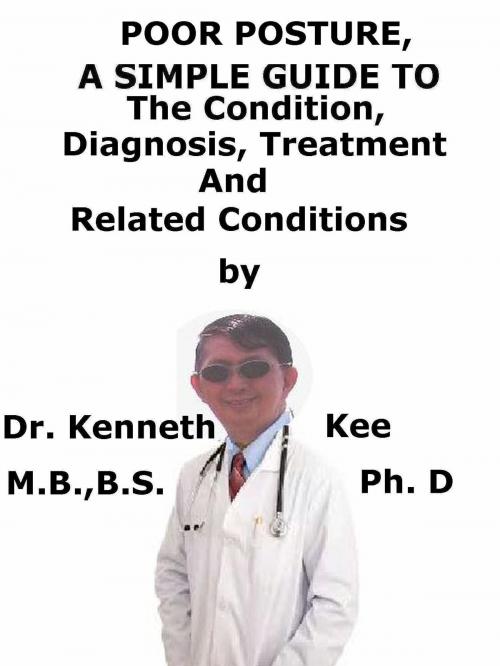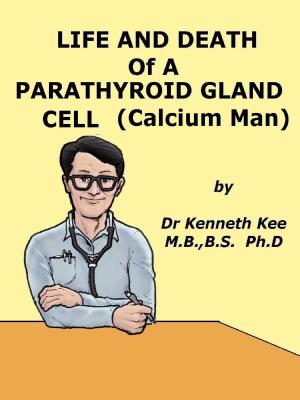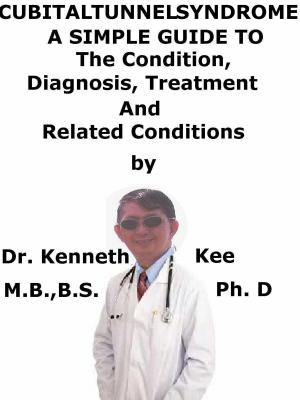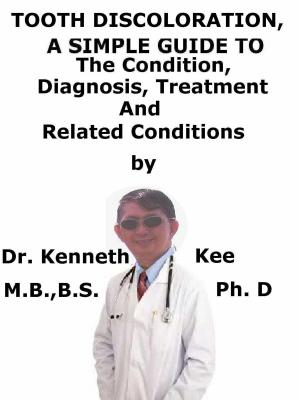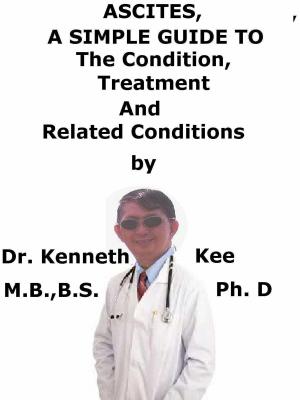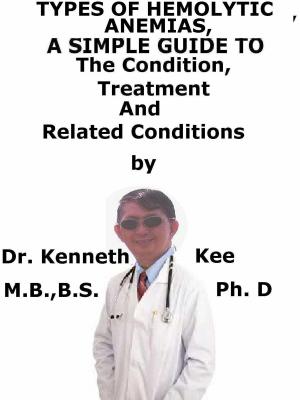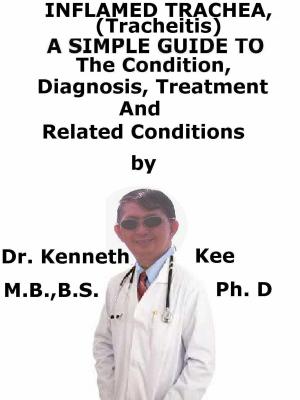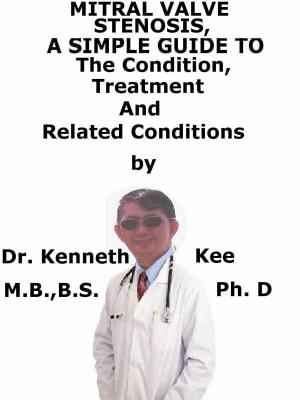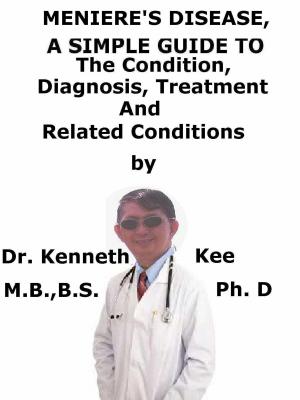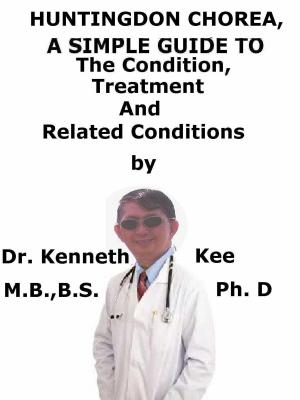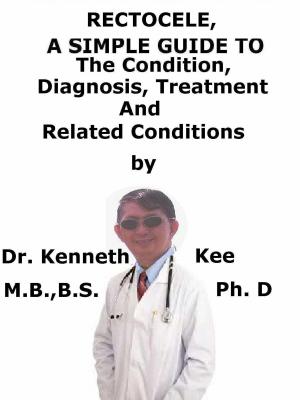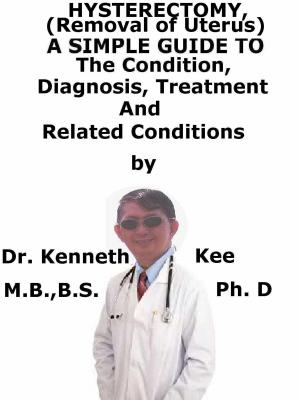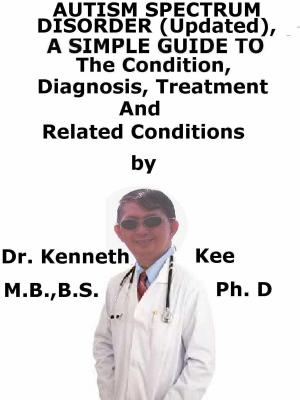Poor Posture, A Simple Guide To The Condition, Diagnosis, Treatment And Related Conditions
Nonfiction, Health & Well Being, Health, Ailments & Diseases, Musculoskeletal, Medical, Specialties, Orthopedics| Author: | Kenneth Kee | ISBN: | 9781370538607 |
| Publisher: | Kenneth Kee | Publication: | February 17, 2018 |
| Imprint: | Smashwords Edition | Language: | English |
| Author: | Kenneth Kee |
| ISBN: | 9781370538607 |
| Publisher: | Kenneth Kee |
| Publication: | February 17, 2018 |
| Imprint: | Smashwords Edition |
| Language: | English |
Importance of good posture:
Good posture allows the best movement of force through the body so the musculoskeletal system can function properly and protect against injury and deterioration.
If the spine is not held upright, the internal organs are crowded into less space which can reduce their effectiveness.
Good posture is the proper alignment of body parts which is supported by the right amount of muscle tension against gravity
A good posture allows you to breathe better, and as a result decreases fatigue and minimizes other side-effects linked with bad posture.
Correct posture refers to the way that you hold the position and body.
The correct posture keeps the muscles, ligaments, bones and internal organs in their natural position.
A good posture is also important to bones of the neck shoulder and back.
There is the decrease in wear and tear of joints, relief of stress, and improvement of health and enhancement of the appearance.
Good posture can also improve self-esteem.
People who adopt good posture not only show greater confidence but have a stronger belief in their own abilities than those with poor posture.
A good posture is also essential for breathing and spine strength.
Poor Posture
A poor posture on the other hand is the type of posture that results from certain muscles tightening up or shortening while others lengthen and become weak.
This often happens as a result of one's daily activities.
Posture refers mainly to the alignment of joints, and is normally related with the natural curves of the spine and the position of the head and pelvis.
When a person thinks of posture, that person thinks of models that have to train to walk with good posture by learning to walk confidently with a book placed on their head.
Poor posture can result in back and shoulder pain to frequent headaches and Temporomandibular Joint (TMJ) dysfunction.
Poor posture can have a profound effect on the risk of developing lower back pain, headaches and other related discomforts.
Poor posture can also cause physical pain and emotional trauma.
By knowing the causes of bad posture, it is hoped that poor posture can be corrected.
A number of factors can affect the posture
Causes
-
Fatigue
Most children have told by their parents from birth to learn to stand up straight in order to have good posture.
It will become harder to keep the back straight and tall as the best way to have good posture, the longer you try to hold the position.
The muscles supporting the back will sooner or later become tired and result in the spine and shoulders sinking lower and worsening the posture.
It is important to ensure that you do not stay in one position too long to counteract this. -
Foot Placement
Foot placement is important to ensure good posture.
It will not matter how straight you keep the spine if the foot placement is not in a natural, comfortable position.
The feet typically roll inward, resulting in the knees to bend and the back to slouch.
Bad posture usually occurs as a result of this foot placement. -
Shoulder Slump
Slumped shoulders can result in many postural problems starting with the upper portion of the spine.
Head forward, rounded shoulders, sunken chest and kyphosis, an excessive curvature of the upper spine, occur as a result of slumped shoulders.
Working on a computer gives you a natural tendency to push the head forward, hunching the shoulders and causing poor alignment of the joints in the neck and upper body.
TABLE OF CONTENT
Introduction
Chapter 1 Poor Posture
Chapter 2 Causes
Chapter 3 Symptoms
Chapter 4 Diagnosis
Chapter 5 Treatment
Chapter 6 Prognosis
Chapter 7 Good Posture
Chapter 8 Kyphosis
Epilogue
Importance of good posture:
Good posture allows the best movement of force through the body so the musculoskeletal system can function properly and protect against injury and deterioration.
If the spine is not held upright, the internal organs are crowded into less space which can reduce their effectiveness.
Good posture is the proper alignment of body parts which is supported by the right amount of muscle tension against gravity
A good posture allows you to breathe better, and as a result decreases fatigue and minimizes other side-effects linked with bad posture.
Correct posture refers to the way that you hold the position and body.
The correct posture keeps the muscles, ligaments, bones and internal organs in their natural position.
A good posture is also important to bones of the neck shoulder and back.
There is the decrease in wear and tear of joints, relief of stress, and improvement of health and enhancement of the appearance.
Good posture can also improve self-esteem.
People who adopt good posture not only show greater confidence but have a stronger belief in their own abilities than those with poor posture.
A good posture is also essential for breathing and spine strength.
Poor Posture
A poor posture on the other hand is the type of posture that results from certain muscles tightening up or shortening while others lengthen and become weak.
This often happens as a result of one's daily activities.
Posture refers mainly to the alignment of joints, and is normally related with the natural curves of the spine and the position of the head and pelvis.
When a person thinks of posture, that person thinks of models that have to train to walk with good posture by learning to walk confidently with a book placed on their head.
Poor posture can result in back and shoulder pain to frequent headaches and Temporomandibular Joint (TMJ) dysfunction.
Poor posture can have a profound effect on the risk of developing lower back pain, headaches and other related discomforts.
Poor posture can also cause physical pain and emotional trauma.
By knowing the causes of bad posture, it is hoped that poor posture can be corrected.
A number of factors can affect the posture
Causes
-
Fatigue
Most children have told by their parents from birth to learn to stand up straight in order to have good posture.
It will become harder to keep the back straight and tall as the best way to have good posture, the longer you try to hold the position.
The muscles supporting the back will sooner or later become tired and result in the spine and shoulders sinking lower and worsening the posture.
It is important to ensure that you do not stay in one position too long to counteract this. -
Foot Placement
Foot placement is important to ensure good posture.
It will not matter how straight you keep the spine if the foot placement is not in a natural, comfortable position.
The feet typically roll inward, resulting in the knees to bend and the back to slouch.
Bad posture usually occurs as a result of this foot placement. -
Shoulder Slump
Slumped shoulders can result in many postural problems starting with the upper portion of the spine.
Head forward, rounded shoulders, sunken chest and kyphosis, an excessive curvature of the upper spine, occur as a result of slumped shoulders.
Working on a computer gives you a natural tendency to push the head forward, hunching the shoulders and causing poor alignment of the joints in the neck and upper body.
TABLE OF CONTENT
Introduction
Chapter 1 Poor Posture
Chapter 2 Causes
Chapter 3 Symptoms
Chapter 4 Diagnosis
Chapter 5 Treatment
Chapter 6 Prognosis
Chapter 7 Good Posture
Chapter 8 Kyphosis
Epilogue
